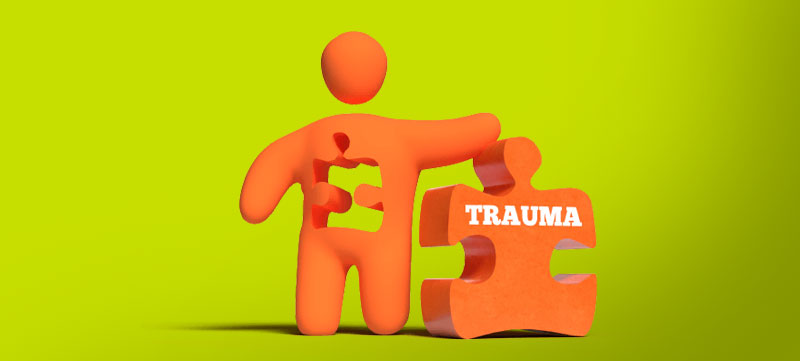Trauma is a powerful word that often brings to mind intense, life-altering experiences. However, the true nature of trauma extends far beyond a single event or memory. Trauma can subtly and profoundly shape our mental and physical well-being, embedding itself deep within our nervous system. Understanding how trauma affects both the mind and body is crucial for those seeking healing and those supporting others on their healing journey. This post will explore the concept of trauma, its impacts on our overall health, and how specialised treatments like Brainspotting can offer a path to deeper healing.
What Is Trauma?
Trauma can be defined as an emotional response to a deeply distressing or disturbing experience. This experience could be a single event, such as a car accident or natural disaster, or a series of events, like prolonged abuse or chronic neglect. However, trauma is not just about the event itself; it’s about how the individual’s nervous system processes and stores the experience.
When someone encounters a traumatic event, the body’s natural response is to go into survival mode. This is often referred to as the “fight, flight, or freeze” response. The brain releases stress hormones like cortisol and adrenaline, which prepare the body to deal with the threat. In an ideal situation, once the danger has passed, the body would return to its normal state, and the memory of the event would be processed and stored in a way that doesn’t interfere with daily life.
However, trauma can disrupt this process. Instead of being processed and filed away as a past event, the traumatic experience can become stuck in the nervous system. This is why someone might feel as though they are constantly reliving the trauma, even years after the event.
Trauma in the Mind
The psychological effects of trauma are well-documented. Individuals may experience symptoms of post-traumatic stress disorder (PTSD), which can include flashbacks, nightmares, severe anxiety, and uncontrollable thoughts about the event. Trauma can also lead to other mental health issues like depression, anxiety, and dissociation.
These psychological symptoms are often the result of how trauma alters brain function. The amygdala, the brain’s fear centre, becomes hyperactive, leading to an exaggerated sense of danger. The hippocampus, which is responsible for memory processing, can shrink, making it difficult to distinguish between past and present threats. The prefrontal cortex, which is responsible for decision-making and self-regulation, can become less effective, leading to problems with concentration and emotional control.
Trauma in the Body
While the psychological effects of trauma are widely recognised, its impact on the body is often overlooked. Trauma doesn’t just live in the mind; it’s stored in the body as well. This concept is crucial for understanding the full scope of trauma’s effects and the path to healing.
When trauma is stored in the body, it can manifest as chronic pain, tension, or unexplained physical symptoms. People may experience headaches, gastrointestinal issues, or muscle tension that seems to have no clear cause. This is because the nervous system remains on high alert, even when there is no immediate threat. The body stays in a state of hypervigilance, with muscles tense and stress hormones elevated.
Over time, this chronic state of stress can lead to long-term health issues. The immune system can become compromised, making the body more susceptible to illness. The constant release of stress hormones can lead to conditions like hypertension, heart disease, and diabetes.
The Need for Deeper Healing
Given the profound impact of trauma on both the mind and body, healing requires more than just talk therapy. While traditional therapies can be helpful, they often focus primarily on cognitive processing and may not fully address the physical manifestations of trauma. This is where deeper healing modalities, such as Brainspotting, come into play.
Brainspotting is a relatively new therapeutic technique that targets the physical and emotional aspects of trauma stored in the body. Developed by Dr. David Grand, brainspotting involves identifying specific points in the visual field, known as “brainspots,” that correlate with areas of the brain where trauma is held. By focusing on these brainspots, individuals can access and process traumatic memories on a deeper level, allowing the body and mind to release the trauma more effectively.
During a brainspotting session, the therapist will guide the client to focus on a particular brainspot while maintaining awareness of their physical and emotional sensations. This dual focus allows for the integration of both mind and body in the healing process. As the individual processes the trauma, they may experience a release of physical tension or emotional distress, leading to a profound sense of relief and healing.
Conclusion
Trauma is a complex and multifaceted experience that affects both the mind and body. Understanding how trauma is stored in the nervous system and recognising its physical manifestations is crucial for effective healing. Techniques like brainspotting offer a promising path to deeper healing by addressing the trauma stored in the body and allowing for a more holistic recovery. If you or someone you know is struggling with the effects of trauma, exploring these deeper healing modalities could be the key to unlocking a healthier, more balanced life.
Healing from trauma is not just about addressing the mind; it’s about embracing the connection between mind and body, acknowledging the impact of trauma on the entire being, and seeking comprehensive, integrative approaches to recovery.



